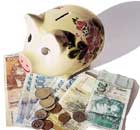Comment
Folks, let's dare to be different
By Qi Zhai (China Daily)
Updated: 2010-01-22 08:47
 |
Large Medium Small |

Before Beijing upgraded its buses to accept swipe cards, commuters used to buy flimsy paper tickets. The bus conductor, tucking a hard-frame bag under her arm, would count off the tickets, mark and then peel them from the stack using a peculiar tool - a thick, double-ended pencil (red on one end and blue on the other), wrapped many times around with rubber bands on the ends.
I dare say that every bus conductor in the city - perhaps even the country - used an identical device back then. As a child, I imagined little elves at the Ministry of Transport wrapping rubber bands around millions of pencils to issue to its staff. Later, I started to wonder why, in a country this large, there wasn't the tiniest bit of variety in how people fashioned their makeshift tools. Where's the innovation?
Before the 1980s, conformity was a natural result of sociopolitical factors and resource constraints. Yet, now that we have reached a stage where people can choose to do things differently, we still don't.
Take a mundane example: How we dress is a personal way to express our uniqueness. In a Western country, if your friend buys a dress you already own you would be justified in feeling a little peeved. Copying your style is an encroachment on your individuality.
Yet in China, people often want to wear the same thing everyone else is wearing. Girlfriends like to go shopping together and leave arm in arm, sporting twin outfits. Even salesgirls try to make convincing pitches by saying: "Here is a new style that everyone is wearing this year." Well, then it's not very new, is it?
It seems rather frivolous to judge our national character by the clothing on our countrywomen's backs. Let's take a look at our grassroots entrepreneurs then. Walk through any big Beijing market - Silk Street (Xiushui), Yaxiu, the Zoo, Tianqiao, Hongqiao - and the abundant goods on display quickly get monotonous. Every souvenir stall sells the same retro chic red star hats; each sportswear vendor carries fake Columbia parkas; and accessories merchants all stock up on LeSportsacs whose cheap zippers inevitably break in due time. My husband, a consummate capitalist, gets so frustrated by this uniformity that he loudly laments: "These guys all have zero pricing power! Anyone can just walk two stalls down and bargain for a lower price on an identical item from someone else."
He's right. Why doesn't anyone try something different? Perhaps a better quality cotton T-shirt might fetch 80 yuan instead of 30? And what about the long-term gain of attracting repeat customers to your differentiated products?
Even big businesses in China choose to simply "go with the flow" and replicate rather than innovate. Look at the logos of our most well-known sporting brands: Li Ning, Anta, Erke. They all look like variations on the same flourishing stroke, which, in turn, mightily resembles the Nike swoosh.
With the popularity of Starbucks, domestic chains have also cropped up with unoriginal names like, something-something-ba ke. The success of one local grocery chain named Jinkelong has spawned many kelong's (clones) - Yikelong, Jingkelong or Xingkelong. Today, I saw a rather shameless rip-off on Xiaofeiyang, my favorite hot pot joint. The pretender was called Xiaoweiyang, "little tailed lamb", which looks and sounds pretty similar to the original restaurant.
I hope that with rising prosperity, our people will have greater daring to dream and take bigger risks to be different.
Perhaps someday soon I can walk down a Beijing lane to browse individually styled boutiques, instead of pawing through imitations at some market named xiu or qiao.










